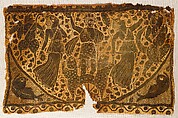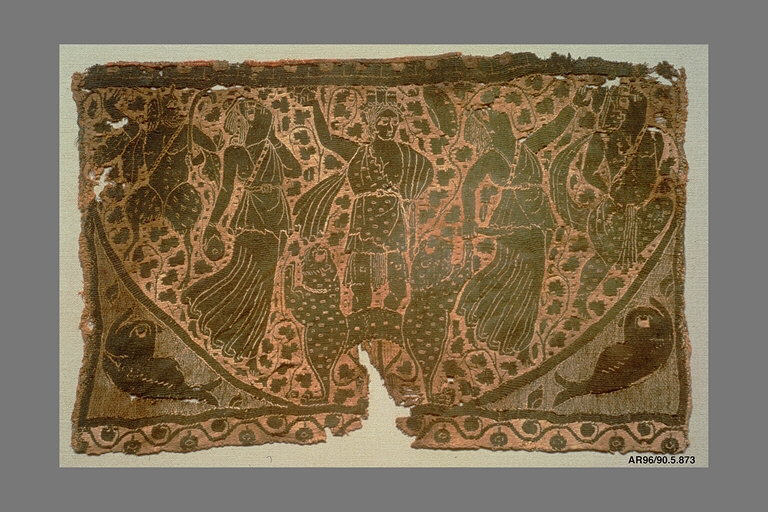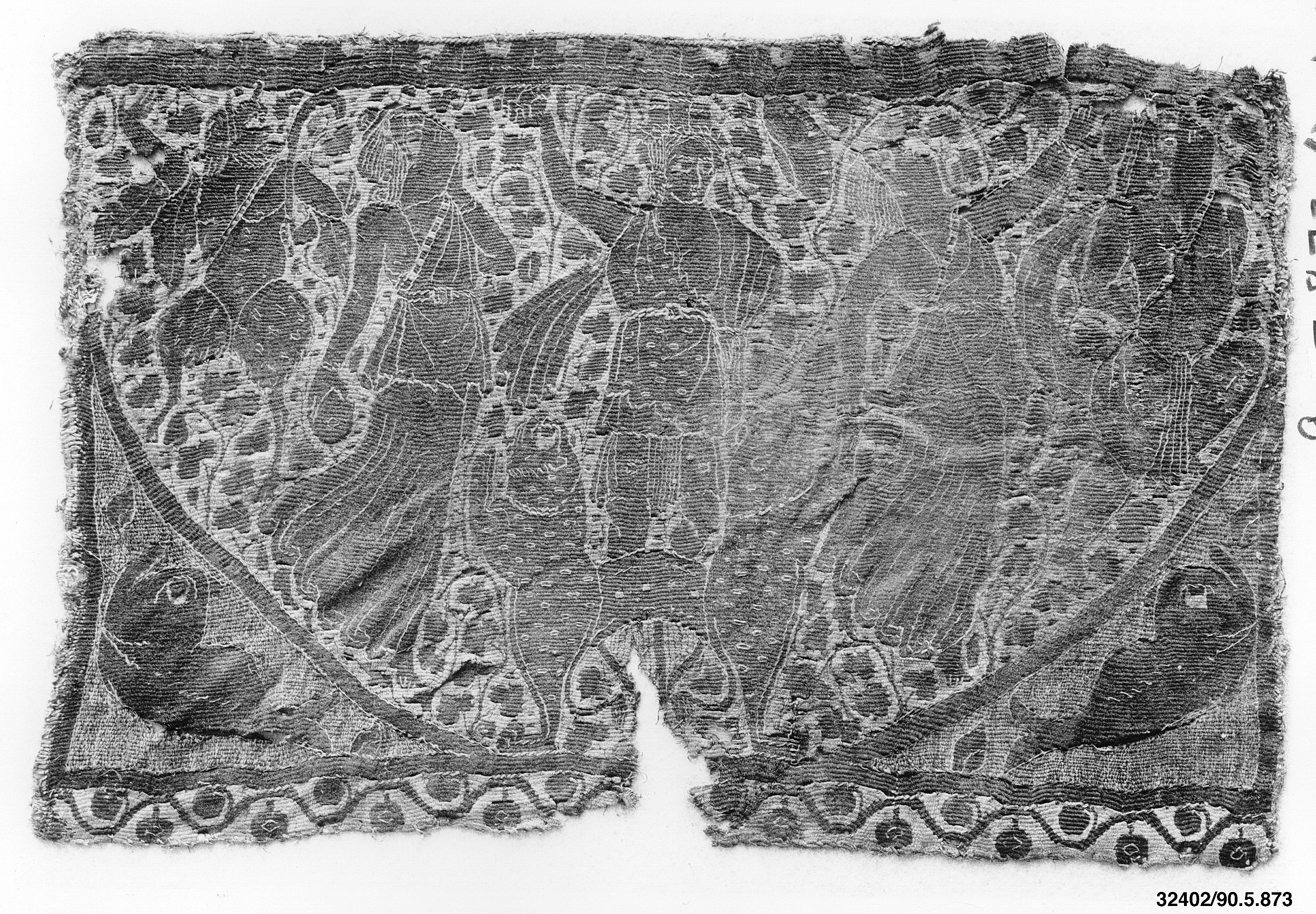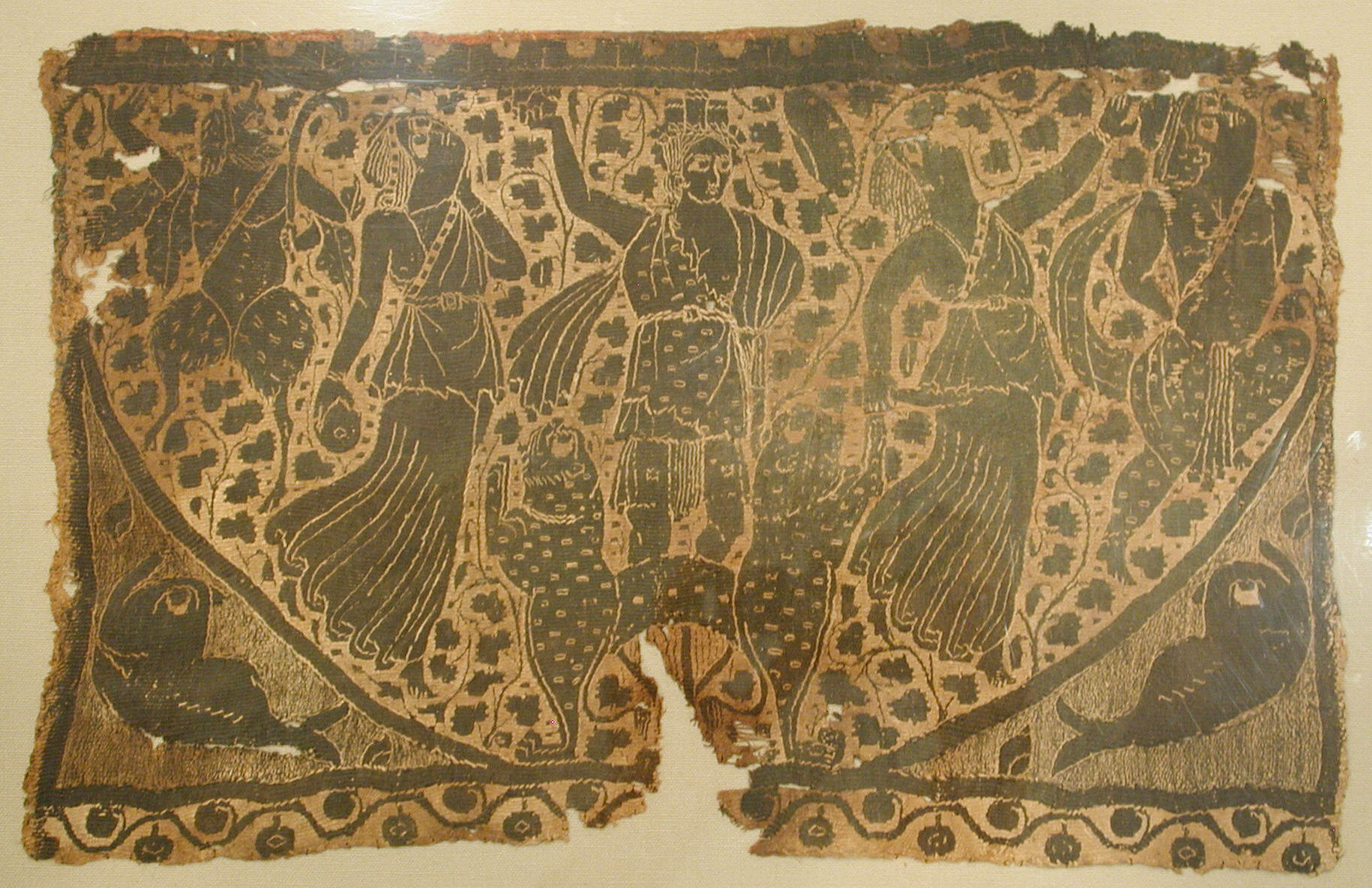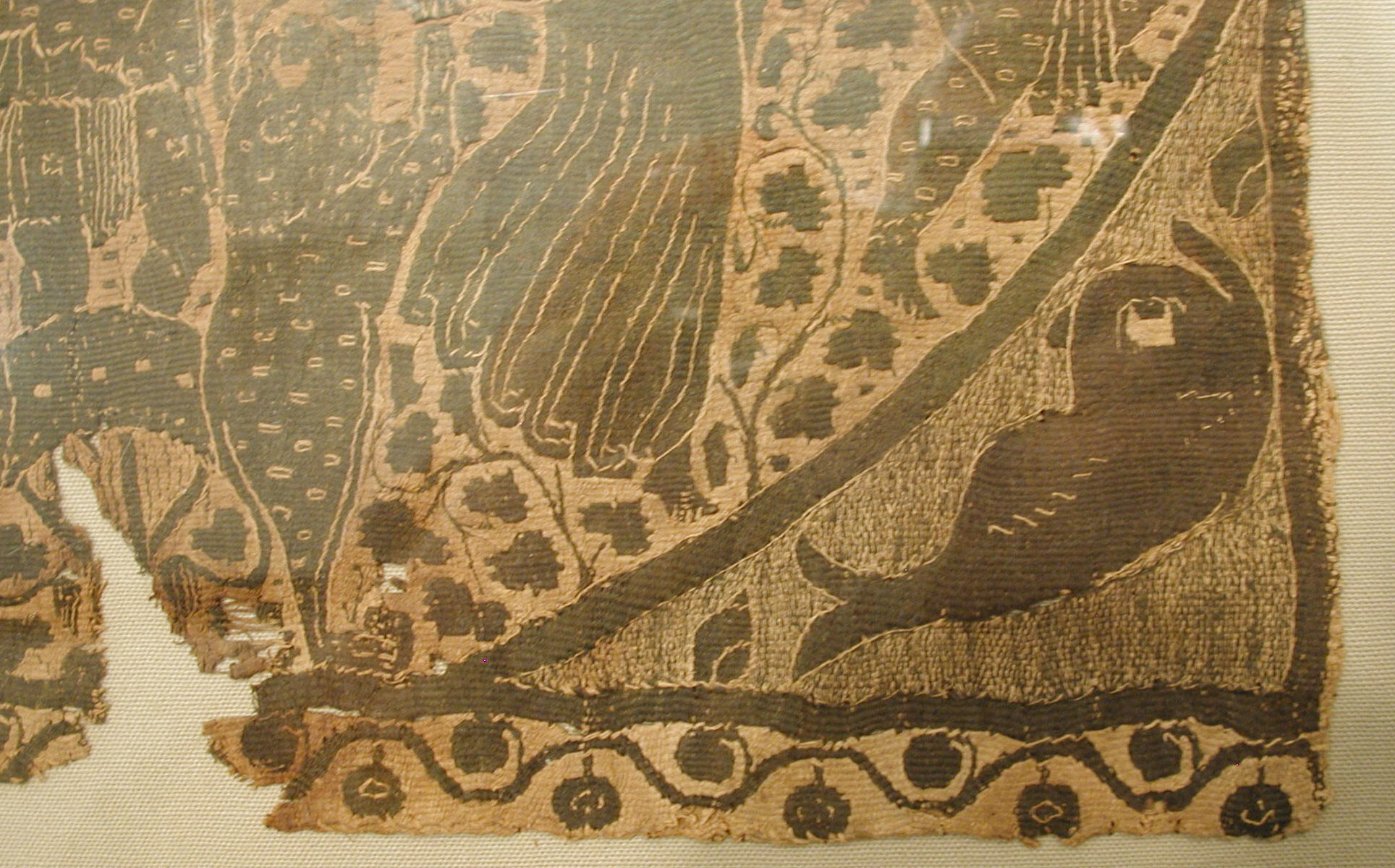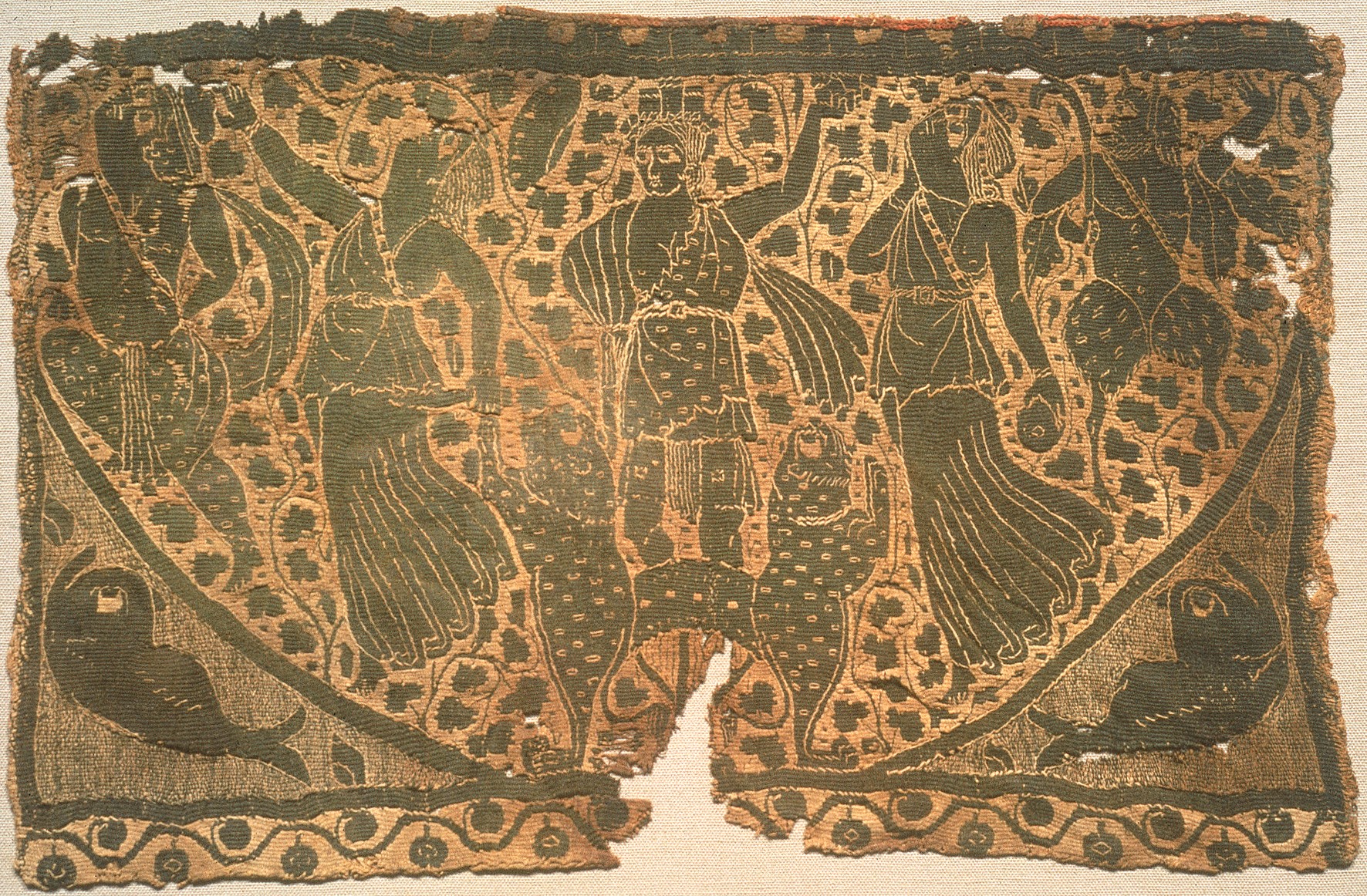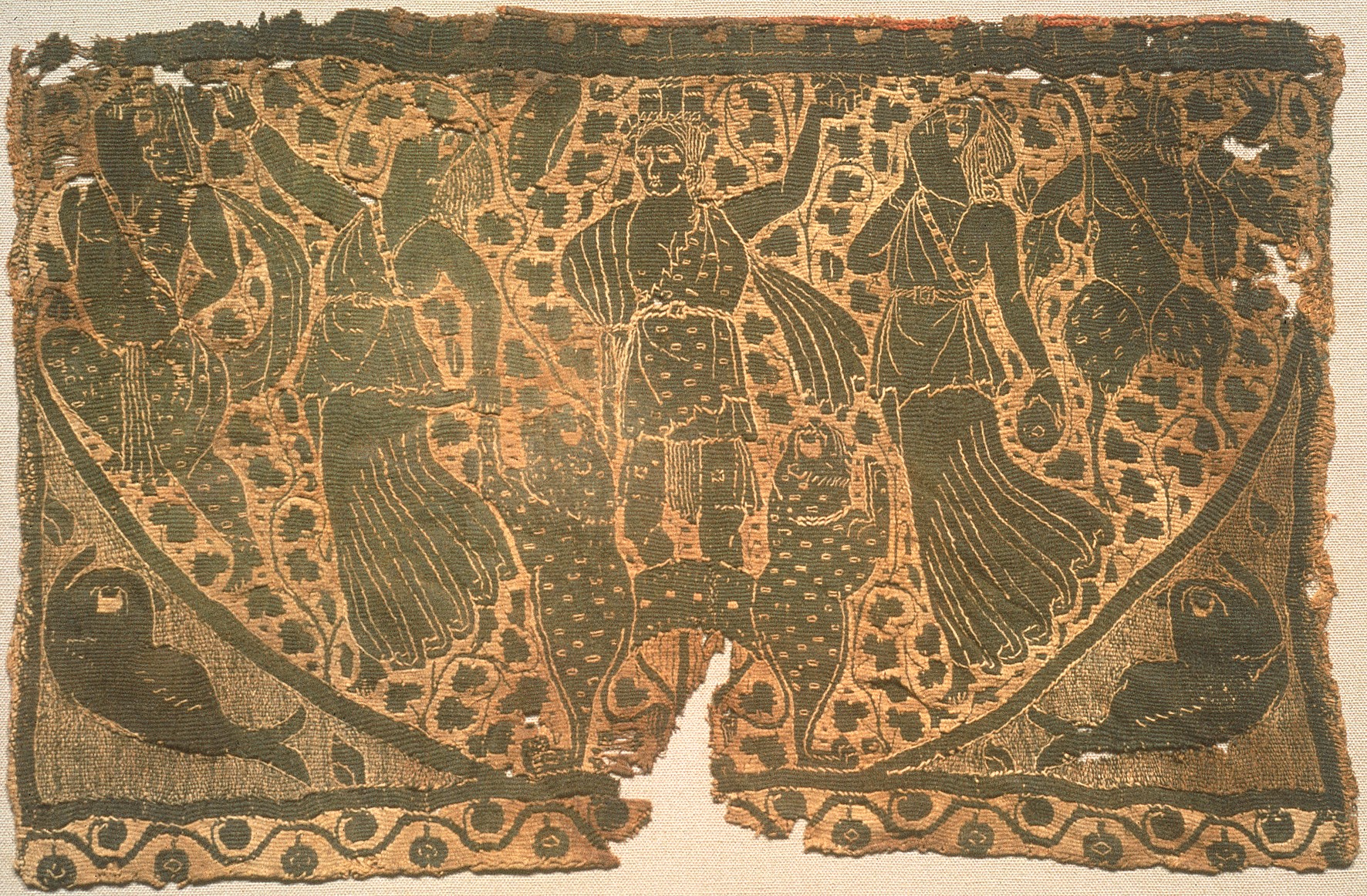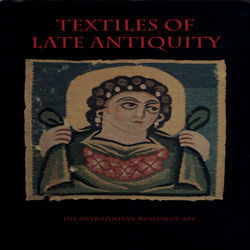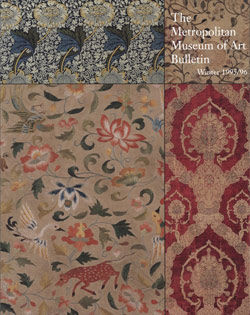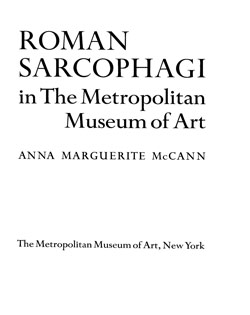Panel with the Triumph of Dionysos
Not on view
Like most textiles from Egypt, this fourth-century panel may have been part of a ritual or festive garment. It was manufactured in the Early Byzantine period from undyed linen and purple wool in tapestry weave technique.
Dionysos, the center figure, rides a chariot drawn by two panthers. As the god of wine and intoxication, he holds in his raised right hand a characteristic bunch of grapes. Immediately adjacent to him caper two maenads (female followers). On his far right is a satyr and on the opposite side is an Indian captive in spotted pantaloon. This scene is meant to celebrate a stage in the god's legendary conquest of India, through which he achieves a triumph in this world and a place in heaven. This popular theme was with Egyptian ruler mythology from the time of Alexander the Great, who was also seen as a god. He conquered India in 325 B.C., a few years after founding the great Egyptian city of Alexandria.
Due to rights restrictions, this image cannot be enlarged, viewed at full screen, or downloaded.
This artwork is meant to be viewed from right to left. Scroll left to view more.
